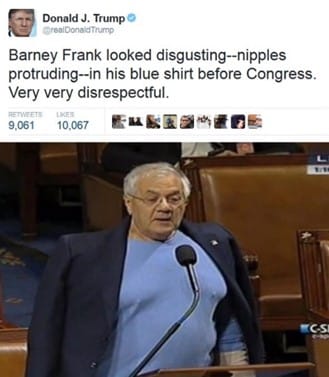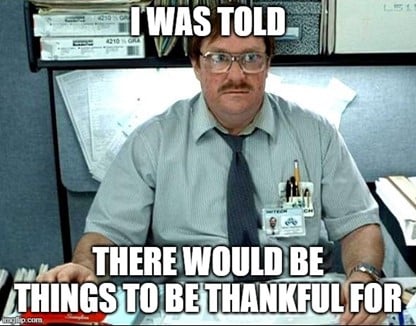Colombia and Brazil are perking up…
A low frequency but juicy strategy where the edge is government incompetence.
Let’s dig in…
Last week we left you on the topic of Brazil, so LatAm has been on our mind all week, especially with Trump laying out a heavy dose of FAFO during the week…

Lets rehash…This week began with a bang in Latin America as Trump came out swinging on Colombia after they refused to accept a couple planes full of migrants. On Sunday night, he declared that Colombia would immediately be subject to 25% tariffs which would double by the end of the week unless they complied. And even though President Petro quickly acquiesced and gave Trump what he wanted, the Colombian markets still opened down Monday morning but were quick to rally, closing firmly in the green. This continued as Colombian equities maintained their strength nearly through the end of the week, with GXG (the Colombian ETF) closing up over 4% (chart below) and Bancolombia S.A. ending the week up almost 8% in Pesos.

So why the strength? Tariffs certainly aren’t bullish. The strength two weeks ago can just be explained by the dollar weakening, so why did markets continue to rip this week while the Peso was down? It’s an interesting divergence and we respect price action.
As we’ve all seen before, there’s little more bullish for an EM stock market than its commie leader getting the boot. For proof, just look at what markets thought of Colombia’s President Petro when he was elected, with the Peso weakening over 20% and the local index falling nearly 30% (see the red arrow above). But Petro is only halfway through his term and there’s no clear opposition candidate, it seems too early to run that playbook. Sure, his polls are terrible with approvals in the high-20s to low-30s and it’s clear that he’s lacking the juice to win in 2026, but all this has been known and nobody has cared. So, what’s changed? Why are markets suddenly pricing in a changing of the guard?
The easy answer here is of course Trump, or more precisely, his twitter fingers. No matter what you think of the guy, it’s hard to not agree that he is undoubtedly the greatest poster of all time.

The man is two weeks into his term and is already rearranging the global geopolitical order, launching WMDs off his iPhone without a care in the world as soon as a thought comes into his head and at any hour and any place. As a trader implicitly long volatility, is there really anything better you could ask for?
So, could it be that Trump’s posting was enough to cause American PMs to look at Colombia and finally realize the reality of its political situation? We think so.
Even without a clear opposition candidate and over a year before the catalyst, the massive light that Trump has shined was enough to reveal to American investors the shaky ground Petro is on and lead to a huge rally in local markets as the commie being out in 2026 is priced it. Traders who have seen this trade work out before in Argentina and missed it are piling in hoping for the same outcome.
As KEDM readers know, we’ve been expecting for there to be a right wave in Latin America for some time and have been focused on Brazil given its large markets and liquidity. Since our initial write up, the Brazilian markets have experienced nausea inducing volatility after the details around Lula’s fiscal policy were revealed over the Thanksgiving holidays. The reactions were extreme. It turned out, that Lula had not suddenly found Capitalist Jesus and his fiscal package fell well short of market expectations, causing the Ibovespa to drop almost 10% (chart below) and sending the 10-year yield climbing over 250bps as we were enjoying our Thanksgiving turkey.


Brazil now has one of the highest real rates in the world. It’s equity market trades at a PE of about 8x, corporate profits are growing, public companies are buying back stock hand over fist, and while its inflation rate is higher than the BCB’s target of 3%, it’s still only 4.5% and is not skyrocketing. Brazil’s problem, similar with Colombia’s, comes from the top. So how do Lula’s polls compare? While the first “real” polls won’t be out until Q1 of 2026, Lula’s prospects look terrible. Different outlets will put his approval rating in the 30s-40s, the lowest ever throughout his long tenure and much lower than the 80% he had the last time he left office in 2010. It’s clear that as things stand, Lula does not have the support to win in 2026 and there have been rumors that he’s admitted as much in ministerial meetings.
Like Colombia, the fact that the writing is on the wall is not new. This was apparent when we first began looking at Brazil and was true as the markets ripped faces off to the downside. The difference now is it finally seems that the odds are being priced in. The Real has retraced its Turkey Day move and the Ibovespa has nearly done the same. Could it just be short covering? A retracement to the breakout? Sure, who knows. But we believe that the action in Colombia could be the beginning of what’s to come and is finally causing US PMs to take a closer look at Latin America. As election season gets closer, the markets will have to adjust and begin to price the probability of more favorable outcomes, causing multiples to expand on an earnings base that has been growing on a shrunken share count, leading to a potentially huge move into the election. We hope that we are that much closer to getting fund outflows to flip to inflows…
Just considering what’s currently being priced in Brazil, there are potentially multiple catalysts throughout the year that could lead to the markets improving. If Lula wants his party to even have a remote chance of winning, he must do something to improve sentiment. His finance minister has recently announced that he’s working on delivering an updated fiscal package in the coming weeks and Lula himself has been making the rounds with corporate CEOs. While we’re sure that the package likely disappoints and that Lula was probably more insulting than anything given his disposition, the bar is so low that it may just be the thought that counts.

All of this to say that we’re excited about the outlook for Brazilian equities in 2025 and once the candidates are announced, we may be even more excited about 2026 and 2027. It’s the largest, most liquid market in Latin America and the companies within are more diverse than those in other EMs, where investor’s options are mainly limited to banks, commodity producers, and the local Coca-Cola bottler. When it turns, every PM in the country will be on the bid to get in and we’re positioned for that to happen. Of course, it is still an EM, so the move this week will likely be retraced and there will be plenty of volatility in the future to keep everybody on their toes and wishing that they just indexed and went to the beach. But we’ve learned to embrace the volatility and hang on for the ride. And we’re ready to see where Brazil will take us.
Start your 28-day free trial
Kuppy’s Event Driven Monitor (“KEDM”) is not a financial or investment advisor and the information contained in this publication is not intended to constitute legal, accounting, or text advice or individually-tailored investment advice and is not designed to meet your personal financial situation. The investments discussed in this publication may not be suitable for you. You are required to conduct your own due diligence, analyses, draw your own conclusions, and make your own investment decisions. Any areas concerning legal, accounting, or tax advice or individually-tailored investment advice should be referred to your lawyers, accountants, tax advisors, investment advisers, or other professionals registered or otherwise authorized to provide such advice. KEDM makes no recommendations whatsoever regarding buying, selling, or holding a specified security, a class of securities, or the securities of a class of issuers, and all commentary is for educational purposes only. The investment examples noted are intended to provide and example of the events and data KEDM flags each week and is not representative of typical returns generated by each event or any future returns.
